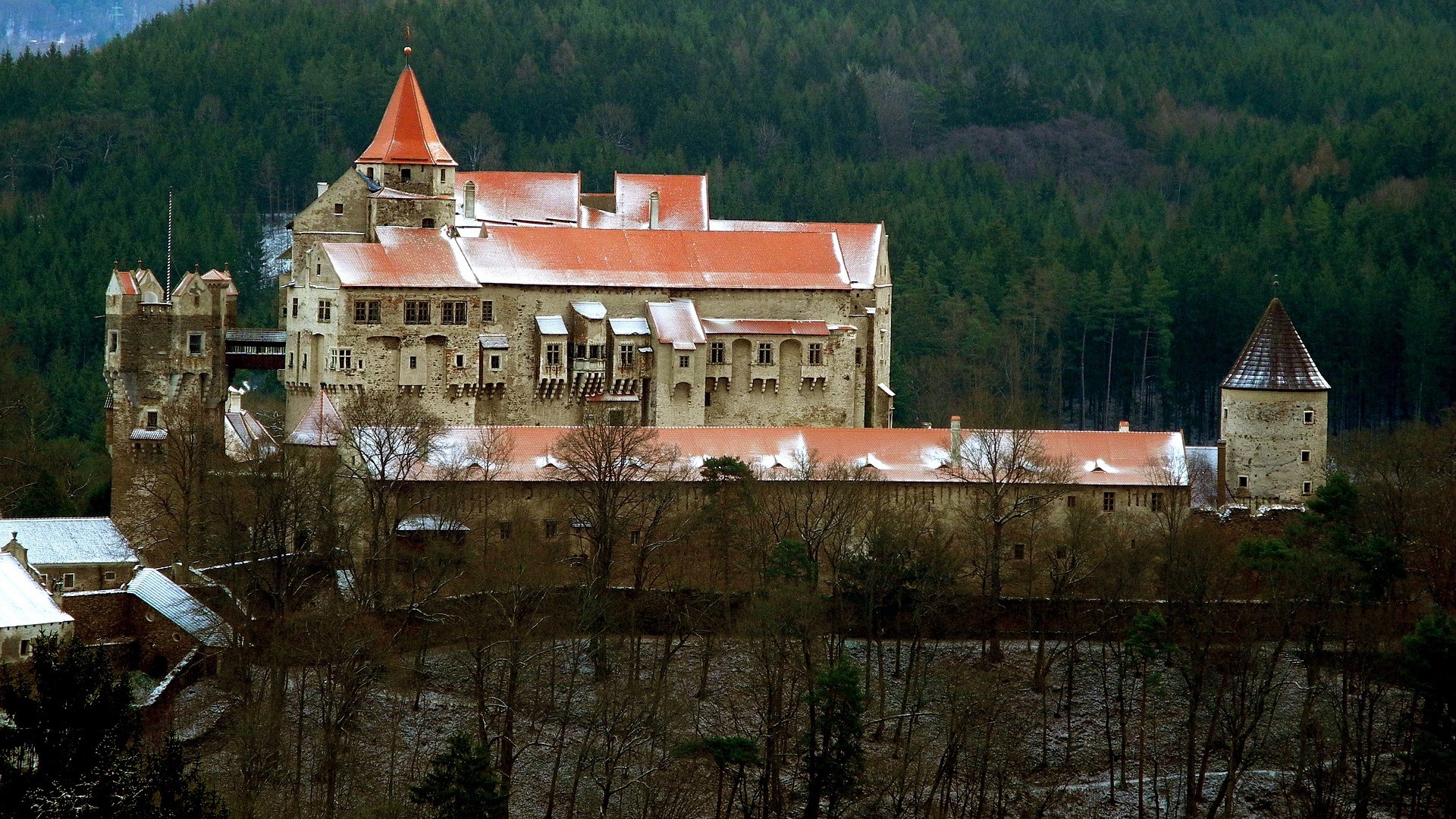Written by Eliska Husarkova

The name Pernstejn is connected with the German term Barenstein, “bear stone”, and in mineralogy amber. Germanized names are not unique in the Czech lands. The gothic 13th century Pernstejn castle stands in the Vysocina region, near the part of the town of Nedvedice, that surrounds the castle grounds. The lords of Pernstejn built a simple bergfrit layout and was rebuilt several or expanded until the 16th century, when it was transformed into a comfortable residence not losing its defenses. Pernstejn is one of the most important Moravian castles. In 1995 being declared a national cultural monument, the castle owned by the Czech Republic, is open to the public and managed by the National Monuments Institute.
This castle was created by the lords of Medlova between 1270 and 1285. A well-known part of the castle is cylindrical tower known as Barborka which was inserted behind the wall. The entrance to the three-story palace is on the south side. In the first half of the 14th century, a tower-like second palace was built in the north-eastern corner of the core, with an outer wall built around the core, defining the inner fort. At the beginning of the 15th century Vilem I. from Pernstejn began the construction of the “mantle”, the buildings surrounding the wall.
In the time of Hussite wars during the government of George of Podebrady, Pernstejn was a strong support of the Hussites. Before 1460 there was a great fire, that instilled Jan Ist to do extensive late Gothic construction of Pernstejn. In 1522 the Knight’s Hall on the first floor of the old palace, was built accessible thru a massive Reception Hall, and a ground floor an entrance hall.
In the middle of the 16th century, the fourth floor of the inner castle was built, but was not completed. This ended the development of the castle, so its appearance is mostly late Gothic.
During the government of Jan, the last of Pernstejn, sold the castle in 1596. Many spaces have preserved Gothic, late Gothic or Renaissance forms.
In 2017 began, the of restoration of the terraced garden on the southwestern slope of the castle promontory.
For more information about Vysocina Region from which this castle comes, click here and here.